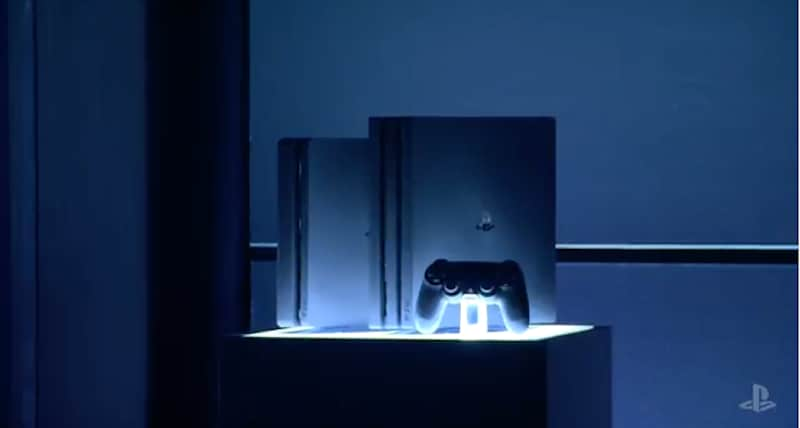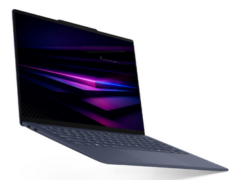- Home
- Games
- Games News
- PlayStation 5 SSD Speed Shown Off in Leaked Spider Man Demo Video
PlayStation 5 SSD Speed Shown Off in Leaked Spider-Man Demo Video
Games on the upcoming PS5 could have much richer, more graphically detailed environments.

Sony announced some of the specifications of its upcoming PlayStation 5 game console in April, including the fact that it would have a "game-changing" SSD in place of a spinning hard drive. Now, the company has demonstrated just how much of a difference the SSD could make to game loading speed, in a leaked video that is said to have been taken during a presentation the company was making to investors. In the video, a level from the recent Spider-Man game loads in around eight seconds on a PS4 Pro, but takes less than one second to load on PlayStation 5 development hardware. Of course the demo was conducted by Sony itself, which had full control over the hardware and game code being used.
In the leaked video, shared by Wall Street Journal writer Takashi Mochizuki on Twitter, Sony also demonstrates Spider-Man zipping through New York City. While the game sometimes pauses on the PlayStation 4 Pro, waiting for the environment to be generated around him, the same scene renders flawlessly and continuously on the "next-generation" hardware. This shows how SSDs are much better suited to dealing with high-bandwidth data transfers.
Sony's official video comparing performance of PS4 Pro vs next-gen PlayStation pic.twitter.com/2eUROxKFLq
— Takashi Mochizuki (@mochi_wsj) May 21, 2019
The PlayStation 5 is not due to be formally launched till mid or late 2020, though some reports are speculating that Sony could make an announcement before the end of 2019. We already know that the next-gen gaming console will deliver a significant bump in power and graphics quality. It will be based on a semi-custom octa-core processor manufactured by AMD, using the same underlying design as upcoming third-generation Ryzen 3000-series CPUs based on the Zen 2 architecture.
According to Mochizuki's tweets, Sony says that the next-gen PlayStation will allow "anytime, anywhere" gaming without disconnections. It will feature a disc drive and 3D audio. Interestingly, the PS4 will continue to be Sony's "engine of engagement and profitability" for the next three years, and there are still exclusive AAA games to be announced for it.
Sony will also be leveraging AMD's Radeon 'Navi' GPU architecture for graphics. The upcoming console is said to use a custom variant of AMD's consumer GPUs, and will support resolutions up to 8K. Ray tracing will also be enabled in some form, though details aren't known yet. More information could become known when AMD formally unveils its Navi generation GPUs at a special event happening alongside the E3 gaming expo in Los Angeles next month.
As for the SSD, Sony PlayStation systems architect Mark Cerny claimed that its raw bandwidth was higher than any commercially available PC SSD, and it will have input/output algorithms and drivers that are optimised for loading games. A fast SSD could greatly reduce the frustration of waiting for levels to load, as the leaked demo shows.
PC gamers already benefit from fast SSDs. It is possible that Sony's upcoming PlayStation console will benefit from AMD's support for the new PCIe 4.0 interconnect standard, which could theoretically double the bandwidth available to an SSD with the same number of PCIe lanes. That opens up new possibilities for game developers to create richly detailed environments, which might have been impossible due to storage bandwidth limitations before.
It is also known that the PlayStation 5 will be backwards compatible with the PlayStation 4. It will be interesting to see how the game console market shapes up in the coming years, especially as high-quality game streaming services such as Google Stadia take off. Sony recently announced a partnership with gaming arch-rival Microsoft to develop cloud game streaming services using the Azure infrastructure.
Catch the latest from the Consumer Electronics Show on Gadgets 360, at our CES 2026 hub.
Related Stories
- Samsung Galaxy Unpacked 2025
- ChatGPT
- Redmi Note 14 Pro+
- iPhone 16
- Apple Vision Pro
- Oneplus 12
- OnePlus Nord CE 3 Lite 5G
- iPhone 13
- Xiaomi 14 Pro
- Oppo Find N3
- Tecno Spark Go (2023)
- Realme V30
- Best Phones Under 25000
- Samsung Galaxy S24 Series
- Cryptocurrency
- iQoo 12
- Samsung Galaxy S24 Ultra
- Giottus
- Samsung Galaxy Z Flip 5
- Apple 'Scary Fast'
- Housefull 5
- GoPro Hero 12 Black Review
- Invincible Season 2
- JioGlass
- HD Ready TV
- Laptop Under 50000
- Smartwatch Under 10000
- Latest Mobile Phones
- Compare Phones
- Motorola Signature
- Vivo Y50e 5G
- Vivo Y50s 5G
- Realme 16 Pro+ 5G
- Realme 16 Pro 5G
- TCL Nxtpaper 70 Pro
- OPPO A6 Pro 5G
- Honor Power 2
- Lenovo Yoga Slim 7x (2025)
- Lenovo Yoga Slim 7a
- Realme Pad 3
- OPPO Pad Air 5
- Xiaomi Watch 5
- Huawei Watch 10th Anniversary Edition
- Acerpure Nitro Z Series 100-inch QLED TV
- Samsung 43 Inch LED Ultra HD (4K) Smart TV (UA43UE81AFULXL)
- Asus ROG Ally
- Nintendo Switch Lite
- Haier 1.6 Ton 5 Star Inverter Split AC (HSU19G-MZAID5BN-INV)
- Haier 1.6 Ton 5 Star Inverter Split AC (HSU19G-MZAIM5BN-INV)

















